9 dash line
description: a demarcation used by China to claim territories in the South China Sea
13 results
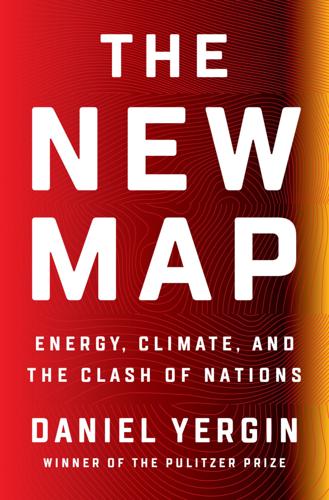
The New Map: Energy, Climate, and the Clash of Nations
by
Daniel Yergin
Published 14 Sep 2020
South China Sea China is claiming most of the South China Sea with its Nine-Dash Line map, leading to tension with Southeast Asian countries and the United States. Two months later, in May 2009, in response to a dispute over the sea with Vietnam and Malaysia, China delivered a “Note Verbale” to the United Nations declaring its “indisputable sovereignty over the islands in the South China Sea and the adjacent waters.” Of special significance in the note was a short parenthetical phrase that was anything but parenthetical in importance—“see attached map.” That was the 9-Dash Line map, based on Bai Meichu’s 1936 map—officially introduced as part of a legal document and a key moment in the “game of maps.”
…
Tonnesson, “The South China Sea in the Age of European Decline,” p. 29. 9. Philip Short, Mao: A Life (New York: Henry Holt, 2000), pp. 418–420 (“stood up”); Zheng Wang, “The Nine-Dashed Line: ‘Engraved in our Hearts’,” The Diplomat, August 25, 2014. Chapter 19: The Three Questions 1. Position Paper of the Government of the People’s Republic of China on the Matter of Jurisdiction in the South Sea Arbitration Initiated by the Republic of the Philippines, December 7, 2014. 2. Zhiguo Gao and Bing Bing Jia, “The Nine-Dash Line in the South China Sea: History, Status, and Implications,” American Journal of International Law 107, no. 1 (January 2013), p. 101; Bill Hayton, The South China Sea: The Struggle for Power in Asia (New Haven Yale University Press, 2014), pp. 24–26; Florian Dupuy and Pierre-Marie Dupuy, “A Legal Analysis of China’s Historic Rights Claim in the South China,” American Journal of International Law 107, no. 1 (January 2013), pp. 124, 136–41; Robert Beckman, “The UN Convention of the Law of the Sea and the Maritime Disputes in the South China Sea,” American Journal of International Law 107, no. 1 (January 2013), p. 143; U.S.
…
The Philippines hardly had any military of its own with which to respond. So it used the only weapon available to it—the UN Convention on the Law of the Sea. It brought a case challenging the 9-Dash Line to an international tribunal established in The Hague. Vietnam associated itself with the claim. In 2016, the tribunal delivered its verdict—wholly in the Philippines’ favor. It rejected the legal and historic claims of the 9-Dash Line. China denounced the decision and made clear that it it would not recognize it, let alone abide by it or the Philippines’ “illegal claims.” The decision changed nothing.6 At this point, there seems to be no definitive means to resolve the differences among the different countries.
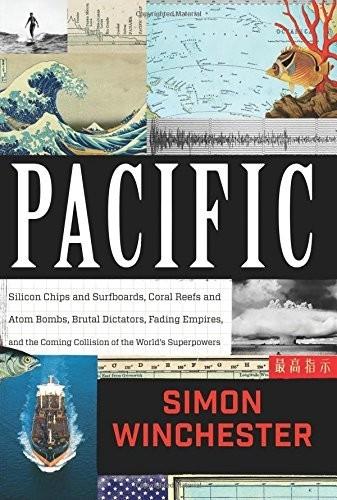
Pacific: Silicon Chips and Surfboards, Coral Reefs and Atom Bombs, Brutal Dictators, Fading Empires, and the Coming Collision of the World's Superpowers
by
Simon Winchester
Published 27 Oct 2015
For at the heart of the new South China Sea problem is another demarcation zone made up of scores of tiny islands that constitute what since 1947 has been known to the Chinese as, somewhat bizarrely, the Nine-Dash Line. The outside world each year sends thousands of its cargo vessels and oil tankers through the crowded shipping lanes here. But Beijing says this territory belongs to China, and its leaders are taking extraordinary and dangerous-looking steps to make sure this is so. If a flash point is in the process of being made, then its axis is the Nine-Dash Line.5 This dashed, or dotted, line was first drawn onto maps in 1947, by officials of what was then the Chinese Nationalist government, the Kuomintang.
…
(There were eleven dashes on the original map, with two more drawn in the gulf between Hainan and Vietnam; these two were later erased.) Informal though that first Kuomintang map may have been, its boundaries were immediately adopted by the Communist government when the People’s Republic was declared in 1949. The Nine-Dash Line became, by the stated policy of the Politburo, the outer limit of Chinese sovereignty, and it has remained so through successive Beijing regimes, no matter what others might say. The Nine-Dash Line, drawn by China as a series of penciled lines on a postwar map of the South China Sea, showed the area of ocean still claimed by the Chinese as their own. The People’s Liberation Army (PLA) Navy insists it can act with impunity within the line; others, the United States included, dispute the claim, hotly.* [UNCLOS and CIA.]
…
MAPS AND ILLUSTRATIONS Map of the Pacific—Political The plutonium bomb Helen of Bikini Alvin Graves Masaru Ibuka Movie poster for Gidget Duke Kahanamoku Hobart Alter Colonel Charles Bonesteel III The USS Pueblo The Pueblo’s surviving crewmen, led by Captain Lloyd Bucher Youngsters’ performance in North Korea The RMS Queen Elizabeth, in her heyday The RMS Queen Elizabeth, sabotaged in Hong Kong Helicopter during the evacuation of Saigon Hong Kong’s “retrocession” Destruction by Cyclone Tracy in the city of Darwin Typhoon Haiyan Sir Gilbert Walker Map of the Pacific—Physical The El Niño Phenomenon Gough Whitlam Jørn Utzon Alvin The tectonic architecture of the Pacific Ocean Black smokers Inhabitants of Australia’s Great Barrier Reef A Hawaiian feather cloak, an ahu’ula The short-tailed, or Steller’s, albatross “The Pacific Garbage Patch” The eruption of Mount Pinatubo The carrier USS Kitty Hawk and a Chinese Song-class diesel attack submarine Map of the Western Pacific: U.S. and Chinese Military The Nine-Dash Line Chinese constructions in the South China Sea The USNS Impeccable Admiral Liu Huaqing Andrew Marshall Hokule‘a PROLOGUE: THE LONELY SEA AND THE SKY Here from this mountain shore, headland beyond stormy headland plunging like dolphins through the blue sea-smoke Into pale sea—look west at the hill of water: it is half the planet . . .
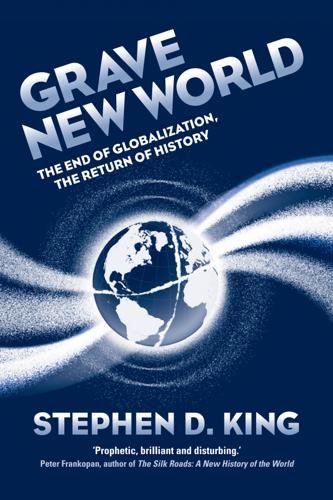
Grave New World: The End of Globalization, the Return of History
by
Stephen D. King
Published 22 May 2017
In July 2016, and following protests by the Philippines, the Permanent Court of Arbitration in The Hague declared much of this unlawful. In the Tribunal’s words, there was ‘no legal basis for China to claim historic rights to resources, in excess of the rights provided for by the Convention, within the sea areas falling within the “nine-dash line” ’.13 It went on to say that China had ‘breached its obligations under the Convention on the International Regulations for Preventing Collisions at Sea’ and had ‘violated its obligations to refrain from aggravating or extending the Parties’ disputes during the pendency of the settlement process’.14 There were just two problems with the rulings: first, the Chinese simply refused to recognize the Court’s authority, and, second, following the election of Rodrigo Duterte as the sixteenth president of the Philippines, the former American colony suddenly chose to realign itself with China.
…
In the Tribunal’s words, there was ‘no legal basis for China to claim historic rights to resources, in excess of the rights provided for by the Convention, within the sea areas falling within the “nine-dash line” ’.13 It went on to say that China had ‘breached its obligations under the Convention on the International Regulations for Preventing Collisions at Sea’ and had ‘violated its obligations to refrain from aggravating or extending the Parties’ disputes during the pendency of the settlement process’.14 There were just two problems with the rulings: first, the Chinese simply refused to recognize the Court’s authority, and, second, following the election of Rodrigo Duterte as the sixteenth president of the Philippines, the former American colony suddenly chose to realign itself with China. The icing on the cake – if that’s the right phrase – was Duterte’s decision to label Barack Obama the ‘son of a whore’, an accusation Duterte later stated ‘wasn’t personal’. Heading north along the nine-dash line, both China and Vietnam claim the Paracel Islands. China and the Philippines are in dispute over the Scarborough Shoal, largely because of its plentiful supply of fish. Both China and Taiwan claim sovereignty over the Pratas Islands (and China, meanwhile, sees Taiwan itself as Chinese). The Senkaku Islands – currently occupied by Japan, but, as the Diaoyu, regarded as sovereign territory by China – are another ‘hotspot’: their sovereignty ultimately rests on whether they were terra nullius (unoccupied and unclaimed territories) when the Japanese got their hands on them in 1895, or whether the Japanese occupied them only as a result of the spoils stemming from China’s submission following the First Sino-Japanese War of 1894–95.
…
He simply pointed out that if country A was absolutely better at producing goods X and Y than country B, but was relatively better than B at producing X than Y, it would make sense for country A to specialize in X, country B to specialize in Y and for the two countries to trade with each other: they would both be better off than before. 11.For a useful discussion of the economic effects of TPP, see P. Petri and M. Plummer, The Economic Effects of the Trans-Pacific Partnership: New estimates, Peterson Institute for International Economics Working Paper 16-2, Washington, DC, January 2016. 12.The US offers Trade Adjustment Assistance, but the jury is out regarding its effectiveness. 13.The nine-dash line was originally an eleven-dash line that first appeared on Taiwanese maps in 1947. The People’s Republic of China thereafter adopted a similar approach: both cases in effect make territorial claims on disputed parts of the South China Sea. 14.The press release accompanying the ruling can be found at https://pca-cpa.org/wp-content/uploads/sites/175/2016/07/PH-CN-20160712-Press-Release-No-11-English.pdf 15.Tibetans might well disagree, but while the Tibetan landmass is huge, it is sparsely populated: at the last count, there were around 3.2 million inhabitants, of whom 90 per cent were ethnically Tibetan.
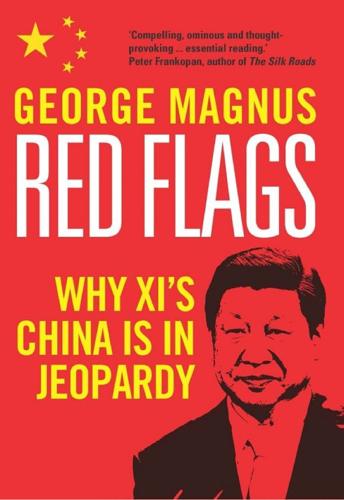
Red Flags: Why Xi's China Is in Jeopardy
by
George Magnus
Published 10 Sep 2018
Eventually, we might imagine, China could seek to extend its naval influence further and perhaps as far away as Indonesia or even Australia. It has already clashed with Japan over uninhabited but strategically placed islands it calls the Diaoyu but which Japan calls the Senkaku. It has also asserted sovereignty over the seas, islands, rocks and reefs that fall inside the so-called Nine-Dash Line in a questionable Chinese map of the South China Sea. China claims historical rights over the entire area bounded by this line, which looks like a giant U-shape, starting off the coast of Vietnam and running all the way down to Malaysia, where it turns north, passes Brunei and goes up to the northernmost part of the Philippines.
…
–China Strategic and Economic Dialogue (i) Hua Guofeng (i) Huangpu district (Shanghai) (i) Huawei (i), (ii), (iii), (iv) hukou (i), (ii), (iii), (iv) Human Freedom Index (i) Human Resources and Social Security, Ministry of (i) Hunan (i) Hungary (i), (ii), (iii), (iv) ICORs (incremental capital-output ratios) (i), (ii), (iii) n4 IMF Article IV report (i) on broadening and deepening of financial system (i) China urged to devalue (i) China’s integration and (i) concern over smaller banks (i) concern over WMPs (i) credit gaps (i) credit intensity (i) GP research (i) ICOR (i) n4 laissez-faire ideas (i) pensions, healthcare and GDP research (i), (ii), (iii) Renminbi reserves (i) risky corporate loans (i) Special Drawing Rights (i), (ii), (iii), (iv), (v) WAPs (i) immigrants see migrants income inequality (i) India Adam Smith on (i) ASEAN (i) BRI misgivings (i) BRICS (i), (ii) comparative debt in (i) demographic dividend (i) economic freedom level (i) frictions with (i) Nobel Prize (i) pushing back against China (i) regional allies of (i) SCO member (i) Indian Ocean access to ports (i) African rail projects and (i) Chinese warships enter (i) rimland (i) shorelines (i) Indo-Pacific region (i), (ii) Indonesia Asian crisis (i) BRI investment (i) debt and GDP (i) GDP (i) rail transport projects (i) RCEP (i) retirement age (i) trade with China (i) Industrial and Commercial Bank of China (i), (ii) Industrial Revolution (i), (ii) industrialisation (i), (ii) Industry and Information Technology, Minister of (i) infrastructure (i), (ii), (iii), (iv) Initial Public Offerings (IPOs) (i) Inner Mongolia (i), (ii) innovation (i), (ii) Inquiry into the Nature and Causes of the Wealth of Nations (Adam Smith) (i) Institute for International Finance (i) institutions (i), (ii) insurance companies (i), (ii), (iii) intellectual property (i) interbank funding (i), (ii), (iii), (iv), (v) investment (i), (ii), (iii) Iran (i) Ireland (i), (ii), (iii) Iron Curtain (i) ‘iron rice bowl’ (i) Israel (i), (ii) Italy (i), (ii), (iii) Jakarta (i), (ii) Japan acts of aggression by (i) aftermath of war (i) ASEAN (i) between the wars (i) bond market (i) Boxer Rebellion and (i) Chiang Kai-shek fights (i) China and (i) China’s insecurity (i) credit gap comparison (i) dispute over Diaoyu islands (i), (ii) export-led growth (i), (ii) financial crisis (i) friction with (i) full-scale war with China (i), (ii) growth (i) high-speed rail (i) India and (i) Liaodong peninsula (i) Manchuria taken (i), (ii), (iii) Mao fights (i) middle- to high-income (i) migrants to (i) Okinawa (i) old-age dependency ratio (i) pensions, healthcare and GDP research (i) pushing back against China (i) RCEP (i) Renminbi block, attitude to (i) research and development (i) rimland (i) robots (i) seas and islands disputes (i) Shinzō Abe (i) TPP (i) trade and investment from (i) yen (i) Jardine Matheson Holdings (i) Jiang Zemin 1990s (i) Deng’s reforms amplified (i), (ii), (iii) influence and allies (i) Xiao Jianhua and (i) Johnson, Lyndon (i) Julius Caesar (i) Kamchatka (i) Kashgar (i) Kashmir (i) Kazakhstan (i), (ii) Ke Jie (i) Kenya (i) Keynes, John Maynard (i) Kharas, Homi (i) Kissinger, Henry (i), (ii), (iii), (iv) Korea (i), (ii), (iii) see also North Korea; South Korea Korean War (i), (ii) Kornai, János (i), (ii), (iii) n16 Kowloon (i), (ii) Krugman, Paul (i) Kunming (i) Kuomintang (KMT) (i), (ii) Kyrgyzstan (i) Kyushu (i) labour productivity (i) land reform (i) Laos (i), (ii), (iii) Latin America (i), (ii), (iii) Lattice Semiconductor Corporation (i) leadership (i) Leading Small Groups (LSGs) (i), (ii), (iii), (iv) Lee Kuan Yew (i) Lee Sodol (i) Legendary Entertainment (i) Lehman Brothers (i) lending (i) Leninism governance tending to (i) late 1940s (i) party purity (i) Xi’s crusade on (i), (ii) Lenovo (i), (ii) Lewis, Arthur (i) Lewis turning point (i) LGFVs (local government financing vehicles) (i) Li Keqiang (i), (ii) Liaodong peninsula (i), (ii) LinkedIn (i) Liu He (i), (ii), (iii) Liu Xiaobo (i) local government (i), (ii), (iii) London (i), (ii), (iii) Luttwak, Edward (i), (ii), (iii) Macartney, Lord George (i), (ii), (iii) Macau (i), (ii) Made in China 2025 (MIC25) ambitious plans (i) importance of (i) mercantilism (i) priority sectors (i) robotics (i) Maddison, Angus (i), (ii), (iii) n3 (C1) Maghreb (i) major banks see individual entries Malacca, Straits of (i) Malay peninsula (i) Malaysia ASEAN member (i) Asian crisis (i) high growth maintenance (i) Nine-Dash Line (i) rail projects (i), (ii) Renminbi reserves (i) TPP member (i) trade with (i) Maldives (i) Malthus, Thomas (i), (ii) Manchuria Communists retake (i) Japanese companies in (i) Japanese puppet state (i), (ii), (iii) key supplier (i) North China Plain and (i) Pacific coast access (i) Russian interests (i) targeted (i) Manhattan (i), (ii) see also New York Mao Zedong arts and sciences (i) China stands up under (i) China under (i) Communist Party’s grip on power (i) consumer sector under (i) Deng rehabilitated (i) Deng, Xi and (i) east wind and west wind (i) Great Leap Forward (i) industrial economy under (i) nature of China under (i) People’s Republic proclaimed (i) positives and negatives (i) property rights (i) women and the workforce (i) Xi and (i) Maoism (i) Mar-a-Lago (i) Mark Antony (i) Market Supervision Administration (i) Marshall Plan (i), (ii) Marxism (i), (ii), (iii), (iv) Mauritius (i) May Fourth Movement (i) McCulley, Paul (i) n18 Mediterranean (i) Menon, Shivshankar (i) mergers (i) MES (market economy status (ii)) Mexico completion of education rates (i) debt comparison (i) GDP comparison (i) NAFTA (i) pensions comparison (i) TPP member (i) US border (i) viagra policy (i) Middle East (i), (ii), (iii) middle-income trap (i), definition (i) evidence and argument for (i) governance (i) hostility to (i) hukou system (i) lack of social welfare for (i) low level of (i) migrant factory workers (i) patents and innovation significance (i) significance of technology tech strengths and weaknesses (i) total factor productivity focus (i) vested and conflicted interests (i) ultimate test (i) World Bank statistics (i) migrants (i), (ii), (iii), (iv), (v) Ming dynasty (i) Minsky, Hyman (i) mixed ownership (i), (ii) Modi, Narendra (i) Mombasa (i) monetary systems (i) Mongolia (i), (ii) Monogram (i) Moody’s (i) Morocco (i) mortality rates (i) see also population statistics mortgages (i) motor cars (i), (ii) Moutai (i) Mundell, Robert (i) Muslims (i) Mutual Fund Connect (i) Myanmar ASEAN (i) Chinese projects (i) disputes (i) low value manufacturing moves to (i) Qing Empire in (i) ‘string of pearls’ (i) ‘Myth of Asia’s Miracle, The’ (Paul Krugman) (i) NAFTA (North American Free Trade Agreement) (i) Nairobi (i) Namibia (i) Nanking (i) Treaty of (i), (ii) National Bureau of Statistics fertility rates (i) GDP figures (i) ICOR estimate (i), (ii), (iii) n4 SOE workers (i) National Cyberspace Work Conference (i) National Development and Reform Commission (i), (ii), (iii) National Financial Work Conferences (i) National Health and Family Planning Commission (i) National Medium and Long-Term Plan for the Development of Science and Technology (i) National Natural Science Foundation (i) National People’s Congress 2007 (i) 2016 (i) 2018 (i), (ii), (iii), (iv) National People’s Party of China (i) National Science Foundation (US) (i) National Security Commission (i) National Security Strategy (US) (i), (ii) National Supervision Commission (i), (ii), (iii), (iv) Needham, Joseph (i) Nepal (i), (ii) Netherlands (i) New Development Bank (i), (ii) New Eurasian Land Bridge (i) New Territories (i), (ii) New York (i) see also Manhattan New Zealand (i), (ii), (iii) Next Generation AI Development Plan (i) Nigeria (i) Nine-Dash Line (i) Ningpo (i) Nixon, Richard (i) Nobel Prizes (i), (ii) Nogales, Arizona (i) Nogales, Sonora (i) Nokia (i) non-communicable disease (i) non-performing loans (i), (ii), (iii), (iv), (v), (vi) North China Plain (i) North Korea (i) see also Korea Northern Rock (i) Norway (i) Nye, Joseph (i) Obama, Barack Hu Jintao and (i) Pacific shift recognised (i) Renminbi (i) US and China (i), (ii) OECD (Organisation for Economic Co-operation and Development) China’s ranking (i) GDP rates for pension and healthcare (i) GP doctors in (i) tertiary education rates (i) US trade deficit with China (i) Office of the US Trade Representative (i) Official Investment Assistance (Japan) (i) Okinawa (i) old-age dependency ratios (i), (ii), (iii) Olson, Mancur (i) Oman (i) one-child policy (i), (ii) Opium Wars financial cost of (i) First Opium War (i), (ii), (iii) Qing dynasty defeated (i) Oriental Pearl TV Tower, Shanghai (i) Pacific (i), (ii), (iii) Padma Bridge (i) Pakistan Economic Corridor (i) long-standing ally (i) Renminbi reserves (i) SCO member (i) ‘string of pearls’ (i) Paris (i) Party Congresses see numerical list at head of index patents (i) Peking (i), (ii), (iii) see also Beijing pensions (i) People’s Bank of China see also banks cuts interest rates again (i) floating exchange rates (i) lender of last resort (i), (ii) long term governor of (i) new rules issued (i) new State Council committee coordinates (i) places severe restrictions on banks (i) publishing Renminbi values (i) Renminbi/dollar rate altered (i) repo agreements (i) sells dollar assets (i) stepping in (i) Zhou Xiaochuan essay (i) People’s Daily front-page interview (i), (ii) on The Hague tribunal (i) riposte to Soros (i) stock market encouragement (i) People’s Liberation Army (i), (ii) Persia (i) Persian Gulf (i), (ii) Peru (i) Pettis, Michael (i) n12 Pew Research (i) Peyrefitte, Alain (i) Philippines (i), (ii), (iii), (iv) Piraeus (i) PISA (Programme for International Student Assessment) (i) Poland (i), (ii), (iii) ‘Polar Silk Road’ (i) Politburo (i), (ii), (iii), (iv) pollution (i) Polo, Marco (i) Pomeranz, Kenneth (i) population statistics (i) see also ageing trap; WAP (working-age population) consequences of ageing (i) demographic dividends (i), (ii) hukou system and other effects (i) low fertility (i), (ii), (iii) migrants (i), (ii) old-age dependency ratios (i), (ii), (iii) one-child policy (i), (ii) places with the most ageing populations (i) rural population (i) savings trends (i) technology and (i) under Mao (i) women (i) Port Arthur (i) Port City Colombo (i), (ii) Portugal (i), (ii), (iii), (iv) pricing (i), (ii) private ownership (i), (ii) productivity (i), (ii) Propaganda, Department of (i) property (i) property rights (i) Puerto Rico (i) Punta Gorda, Florida (i) Putin, Vladimir (i) Qianlong, Emperor (i) Qing dynasty (i), (ii), (iii) Qingdao (i) Qualcomm (i) Qualified Domestic Institutional Investors (i), (ii) Qualified Foreign Institutional Investors (i), (ii) Qiushi, magazine (i) rail network (i), (ii) RCEP (Regional Comprehensive Economic Partnership) (i), (ii), (iii) real estate (i), (ii) reform authoritative source warns of need for (i), (ii) different meaning from West (i) of economy via rebalancing (i), (ii) as embraced by Deng Xiaoping (i) fiscal, foreign trade and finance (i), (ii) Hukou (i) of ownership (i) state-owned enterprises (i) third plenum announcements (i) in Xi Jinping’s China (i) ‘Reform and Opening Up’ (Deng Xiaoping) (i), (ii), (iii) regulations and regulatory authorities (financial) (i), (ii) Reinhart, Carmen (i) Renminbi (i) 2015 mini-devaluation and capital outflows (i), (ii) appreciates (i) banking system’s assets in (i) bloc for (i) capital flight risk (i) devaluation (i), (ii), (iii), (iv) dim sum bonds (i) efforts to internationalise (i) end of peg (i) foreign investors and (i) fully convertible currency, a (i) growing importance of (i) IMF’s Special Drawing Rights (i) Qualified Institutional Investors (i) in relation to reserves (i) Renminbi trap (i), (ii), (iii), (iv) share of world reserves (i) significance of (i), (ii) Special Drawing Rights and (i), (ii) US dollar and (i), (ii), (iii), (iv), (v) repo markets (i), (ii) research and development (R&D) (i), (ii) Resources Department (i) retirement age (i) Rhodium Group (i) rimland (i) Robinson, James (i) robots (i) Rogoff, Kenneth (i) Roman Empire (i) Rotterdam (i) Rozelle, Scott (i) Rudd, Kevin (i) Rudong County (i) Rumsfeld, Donald (i) Rural Cooperative Medical Scheme (i) rural workers (i) Russia see also Soviet Union 19th century acquisitions (i), (ii) ageing population (i) BRI and (i) BRICS (i), (ii), (iii) C929s (i) China’s view of (i) early attempts at trade (i) fertility rates (i) Human Freedom Index (i) middle income trap and (i) Pacific sea ports (i) Polar Silk Road (i) Renminbi reserves (i) SCO member (i) Ryukyu Islands (i) Samsung (i) San Francisco (i) SASAC (i), (ii) Saudi Arabia (i) savings (i), (ii), (iii) Scarborough Shoal (i) Schmidt, Eric (i) Schumpeter, Joseph (i) SCIOs (i) Second Opium War (i) Second World War China and Japan (i), (ii) economic development since (i) Marshall Plan (i), (ii) US and Japan (i) Senkaku islands see Diaoyu islands separatism (i), (ii) Serbia (i) service sector (i), (ii) Seventh Fleet (US) (i) SEZs (special economic zones) (i), (ii), (iii), (iv) shadow banks (i), (ii), (iii), (iv), (v), (vi), (vii), (viii), (ix) n18 see also banks Shandong (i), (ii) Shanghai 1st Party Congress (i) arsenal (i) British influence in (i) central bank established (i) Deng’s Southern Tour (i) firms halt trading (i) income per head (i) interbank currency market (i) PISA scores (i) pollution (i) property price rises (i) stock market (i), (ii), (iii) Western skills used (i) Shanghai Composite Index (i), (ii) Shanghai Cooperation Organisation (SCO) (i), (ii), (iii) Shanghai Free Trade Zone (i), (ii), (iii) Shanghai–Hong Kong Bond Connect Scheme (i) Shanghai–Hong Kong Stock Connect Scheme (i), (ii) Shanghai World Financial Centre (i) Shenzhen first foreign company in (i) n3 (Intro.)
…
–China Strategic and Economic Dialogue (i) Hua Guofeng (i) Huangpu district (Shanghai) (i) Huawei (i), (ii), (iii), (iv) hukou (i), (ii), (iii), (iv) Human Freedom Index (i) Human Resources and Social Security, Ministry of (i) Hunan (i) Hungary (i), (ii), (iii), (iv) ICORs (incremental capital-output ratios) (i), (ii), (iii) n4 IMF Article IV report (i) on broadening and deepening of financial system (i) China urged to devalue (i) China’s integration and (i) concern over smaller banks (i) concern over WMPs (i) credit gaps (i) credit intensity (i) GP research (i) ICOR (i) n4 laissez-faire ideas (i) pensions, healthcare and GDP research (i), (ii), (iii) Renminbi reserves (i) risky corporate loans (i) Special Drawing Rights (i), (ii), (iii), (iv), (v) WAPs (i) immigrants see migrants income inequality (i) India Adam Smith on (i) ASEAN (i) BRI misgivings (i) BRICS (i), (ii) comparative debt in (i) demographic dividend (i) economic freedom level (i) frictions with (i) Nobel Prize (i) pushing back against China (i) regional allies of (i) SCO member (i) Indian Ocean access to ports (i) African rail projects and (i) Chinese warships enter (i) rimland (i) shorelines (i) Indo-Pacific region (i), (ii) Indonesia Asian crisis (i) BRI investment (i) debt and GDP (i) GDP (i) rail transport projects (i) RCEP (i) retirement age (i) trade with China (i) Industrial and Commercial Bank of China (i), (ii) Industrial Revolution (i), (ii) industrialisation (i), (ii) Industry and Information Technology, Minister of (i) infrastructure (i), (ii), (iii), (iv) Initial Public Offerings (IPOs) (i) Inner Mongolia (i), (ii) innovation (i), (ii) Inquiry into the Nature and Causes of the Wealth of Nations (Adam Smith) (i) Institute for International Finance (i) institutions (i), (ii) insurance companies (i), (ii), (iii) intellectual property (i) interbank funding (i), (ii), (iii), (iv), (v) investment (i), (ii), (iii) Iran (i) Ireland (i), (ii), (iii) Iron Curtain (i) ‘iron rice bowl’ (i) Israel (i), (ii) Italy (i), (ii), (iii) Jakarta (i), (ii) Japan acts of aggression by (i) aftermath of war (i) ASEAN (i) between the wars (i) bond market (i) Boxer Rebellion and (i) Chiang Kai-shek fights (i) China and (i) China’s insecurity (i) credit gap comparison (i) dispute over Diaoyu islands (i), (ii) export-led growth (i), (ii) financial crisis (i) friction with (i) full-scale war with China (i), (ii) growth (i) high-speed rail (i) India and (i) Liaodong peninsula (i) Manchuria taken (i), (ii), (iii) Mao fights (i) middle- to high-income (i) migrants to (i) Okinawa (i) old-age dependency ratio (i) pensions, healthcare and GDP research (i) pushing back against China (i) RCEP (i) Renminbi block, attitude to (i) research and development (i) rimland (i) robots (i) seas and islands disputes (i) Shinzō Abe (i) TPP (i) trade and investment from (i) yen (i) Jardine Matheson Holdings (i) Jiang Zemin 1990s (i) Deng’s reforms amplified (i), (ii), (iii) influence and allies (i) Xiao Jianhua and (i) Johnson, Lyndon (i) Julius Caesar (i) Kamchatka (i) Kashgar (i) Kashmir (i) Kazakhstan (i), (ii) Ke Jie (i) Kenya (i) Keynes, John Maynard (i) Kharas, Homi (i) Kissinger, Henry (i), (ii), (iii), (iv) Korea (i), (ii), (iii) see also North Korea; South Korea Korean War (i), (ii) Kornai, János (i), (ii), (iii) n16 Kowloon (i), (ii) Krugman, Paul (i) Kunming (i) Kuomintang (KMT) (i), (ii) Kyrgyzstan (i) Kyushu (i) labour productivity (i) land reform (i) Laos (i), (ii), (iii) Latin America (i), (ii), (iii) Lattice Semiconductor Corporation (i) leadership (i) Leading Small Groups (LSGs) (i), (ii), (iii), (iv) Lee Kuan Yew (i) Lee Sodol (i) Legendary Entertainment (i) Lehman Brothers (i) lending (i) Leninism governance tending to (i) late 1940s (i) party purity (i) Xi’s crusade on (i), (ii) Lenovo (i), (ii) Lewis, Arthur (i) Lewis turning point (i) LGFVs (local government financing vehicles) (i) Li Keqiang (i), (ii) Liaodong peninsula (i), (ii) LinkedIn (i) Liu He (i), (ii), (iii) Liu Xiaobo (i) local government (i), (ii), (iii) London (i), (ii), (iii) Luttwak, Edward (i), (ii), (iii) Macartney, Lord George (i), (ii), (iii) Macau (i), (ii) Made in China 2025 (MIC25) ambitious plans (i) importance of (i) mercantilism (i) priority sectors (i) robotics (i) Maddison, Angus (i), (ii), (iii) n3 (C1) Maghreb (i) major banks see individual entries Malacca, Straits of (i) Malay peninsula (i) Malaysia ASEAN member (i) Asian crisis (i) high growth maintenance (i) Nine-Dash Line (i) rail projects (i), (ii) Renminbi reserves (i) TPP member (i) trade with (i) Maldives (i) Malthus, Thomas (i), (ii) Manchuria Communists retake (i) Japanese companies in (i) Japanese puppet state (i), (ii), (iii) key supplier (i) North China Plain and (i) Pacific coast access (i) Russian interests (i) targeted (i) Manhattan (i), (ii) see also New York Mao Zedong arts and sciences (i) China stands up under (i) China under (i) Communist Party’s grip on power (i) consumer sector under (i) Deng rehabilitated (i) Deng, Xi and (i) east wind and west wind (i) Great Leap Forward (i) industrial economy under (i) nature of China under (i) People’s Republic proclaimed (i) positives and negatives (i) property rights (i) women and the workforce (i) Xi and (i) Maoism (i) Mar-a-Lago (i) Mark Antony (i) Market Supervision Administration (i) Marshall Plan (i), (ii) Marxism (i), (ii), (iii), (iv) Mauritius (i) May Fourth Movement (i) McCulley, Paul (i) n18 Mediterranean (i) Menon, Shivshankar (i) mergers (i) MES (market economy status (ii)) Mexico completion of education rates (i) debt comparison (i) GDP comparison (i) NAFTA (i) pensions comparison (i) TPP member (i) US border (i) viagra policy (i) Middle East (i), (ii), (iii) middle-income trap (i), definition (i) evidence and argument for (i) governance (i) hostility to (i) hukou system (i) lack of social welfare for (i) low level of (i) migrant factory workers (i) patents and innovation significance (i) significance of technology tech strengths and weaknesses (i) total factor productivity focus (i) vested and conflicted interests (i) ultimate test (i) World Bank statistics (i) migrants (i), (ii), (iii), (iv), (v) Ming dynasty (i) Minsky, Hyman (i) mixed ownership (i), (ii) Modi, Narendra (i) Mombasa (i) monetary systems (i) Mongolia (i), (ii) Monogram (i) Moody’s (i) Morocco (i) mortality rates (i) see also population statistics mortgages (i) motor cars (i), (ii) Moutai (i) Mundell, Robert (i) Muslims (i) Mutual Fund Connect (i) Myanmar ASEAN (i) Chinese projects (i) disputes (i) low value manufacturing moves to (i) Qing Empire in (i) ‘string of pearls’ (i) ‘Myth of Asia’s Miracle, The’ (Paul Krugman) (i) NAFTA (North American Free Trade Agreement) (i) Nairobi (i) Namibia (i) Nanking (i) Treaty of (i), (ii) National Bureau of Statistics fertility rates (i) GDP figures (i) ICOR estimate (i), (ii), (iii) n4 SOE workers (i) National Cyberspace Work Conference (i) National Development and Reform Commission (i), (ii), (iii) National Financial Work Conferences (i) National Health and Family Planning Commission (i) National Medium and Long-Term Plan for the Development of Science and Technology (i) National Natural Science Foundation (i) National People’s Congress 2007 (i) 2016 (i) 2018 (i), (ii), (iii), (iv) National People’s Party of China (i) National Science Foundation (US) (i) National Security Commission (i) National Security Strategy (US) (i), (ii) National Supervision Commission (i), (ii), (iii), (iv) Needham, Joseph (i) Nepal (i), (ii) Netherlands (i) New Development Bank (i), (ii) New Eurasian Land Bridge (i) New Territories (i), (ii) New York (i) see also Manhattan New Zealand (i), (ii), (iii) Next Generation AI Development Plan (i) Nigeria (i) Nine-Dash Line (i) Ningpo (i) Nixon, Richard (i) Nobel Prizes (i), (ii) Nogales, Arizona (i) Nogales, Sonora (i) Nokia (i) non-communicable disease (i) non-performing loans (i), (ii), (iii), (iv), (v), (vi) North China Plain (i) North Korea (i) see also Korea Northern Rock (i) Norway (i) Nye, Joseph (i) Obama, Barack Hu Jintao and (i) Pacific shift recognised (i) Renminbi (i) US and China (i), (ii) OECD (Organisation for Economic Co-operation and Development) China’s ranking (i) GDP rates for pension and healthcare (i) GP doctors in (i) tertiary education rates (i) US trade deficit with China (i) Office of the US Trade Representative (i) Official Investment Assistance (Japan) (i) Okinawa (i) old-age dependency ratios (i), (ii), (iii) Olson, Mancur (i) Oman (i) one-child policy (i), (ii) Opium Wars financial cost of (i) First Opium War (i), (ii), (iii) Qing dynasty defeated (i) Oriental Pearl TV Tower, Shanghai (i) Pacific (i), (ii), (iii) Padma Bridge (i) Pakistan Economic Corridor (i) long-standing ally (i) Renminbi reserves (i) SCO member (i) ‘string of pearls’ (i) Paris (i) Party Congresses see numerical list at head of index patents (i) Peking (i), (ii), (iii) see also Beijing pensions (i) People’s Bank of China see also banks cuts interest rates again (i) floating exchange rates (i) lender of last resort (i), (ii) long term governor of (i) new rules issued (i) new State Council committee coordinates (i) places severe restrictions on banks (i) publishing Renminbi values (i) Renminbi/dollar rate altered (i) repo agreements (i) sells dollar assets (i) stepping in (i) Zhou Xiaochuan essay (i) People’s Daily front-page interview (i), (ii) on The Hague tribunal (i) riposte to Soros (i) stock market encouragement (i) People’s Liberation Army (i), (ii) Persia (i) Persian Gulf (i), (ii) Peru (i) Pettis, Michael (i) n12 Pew Research (i) Peyrefitte, Alain (i) Philippines (i), (ii), (iii), (iv) Piraeus (i) PISA (Programme for International Student Assessment) (i) Poland (i), (ii), (iii) ‘Polar Silk Road’ (i) Politburo (i), (ii), (iii), (iv) pollution (i) Polo, Marco (i) Pomeranz, Kenneth (i) population statistics (i) see also ageing trap; WAP (working-age population) consequences of ageing (i) demographic dividends (i), (ii) hukou system and other effects (i) low fertility (i), (ii), (iii) migrants (i), (ii) old-age dependency ratios (i), (ii), (iii) one-child policy (i), (ii) places with the most ageing populations (i) rural population (i) savings trends (i) technology and (i) under Mao (i) women (i) Port Arthur (i) Port City Colombo (i), (ii) Portugal (i), (ii), (iii), (iv) pricing (i), (ii) private ownership (i), (ii) productivity (i), (ii) Propaganda, Department of (i) property (i) property rights (i) Puerto Rico (i) Punta Gorda, Florida (i) Putin, Vladimir (i) Qianlong, Emperor (i) Qing dynasty (i), (ii), (iii) Qingdao (i) Qualcomm (i) Qualified Domestic Institutional Investors (i), (ii) Qualified Foreign Institutional Investors (i), (ii) Qiushi, magazine (i) rail network (i), (ii) RCEP (Regional Comprehensive Economic Partnership) (i), (ii), (iii) real estate (i), (ii) reform authoritative source warns of need for (i), (ii) different meaning from West (i) of economy via rebalancing (i), (ii) as embraced by Deng Xiaoping (i) fiscal, foreign trade and finance (i), (ii) Hukou (i) of ownership (i) state-owned enterprises (i) third plenum announcements (i) in Xi Jinping’s China (i) ‘Reform and Opening Up’ (Deng Xiaoping) (i), (ii), (iii) regulations and regulatory authorities (financial) (i), (ii) Reinhart, Carmen (i) Renminbi (i) 2015 mini-devaluation and capital outflows (i), (ii) appreciates (i) banking system’s assets in (i) bloc for (i) capital flight risk (i) devaluation (i), (ii), (iii), (iv) dim sum bonds (i) efforts to internationalise (i) end of peg (i) foreign investors and (i) fully convertible currency, a (i) growing importance of (i) IMF’s Special Drawing Rights (i) Qualified Institutional Investors (i) in relation to reserves (i) Renminbi trap (i), (ii), (iii), (iv) share of world reserves (i) significance of (i), (ii) Special Drawing Rights and (i), (ii) US dollar and (i), (ii), (iii), (iv), (v) repo markets (i), (ii) research and development (R&D) (i), (ii) Resources Department (i) retirement age (i) Rhodium Group (i) rimland (i) Robinson, James (i) robots (i) Rogoff, Kenneth (i) Roman Empire (i) Rotterdam (i) Rozelle, Scott (i) Rudd, Kevin (i) Rudong County (i) Rumsfeld, Donald (i) Rural Cooperative Medical Scheme (i) rural workers (i) Russia see also Soviet Union 19th century acquisitions (i), (ii) ageing population (i) BRI and (i) BRICS (i), (ii), (iii) C929s (i) China’s view of (i) early attempts at trade (i) fertility rates (i) Human Freedom Index (i) middle income trap and (i) Pacific sea ports (i) Polar Silk Road (i) Renminbi reserves (i) SCO member (i) Ryukyu Islands (i) Samsung (i) San Francisco (i) SASAC (i), (ii) Saudi Arabia (i) savings (i), (ii), (iii) Scarborough Shoal (i) Schmidt, Eric (i) Schumpeter, Joseph (i) SCIOs (i) Second Opium War (i) Second World War China and Japan (i), (ii) economic development since (i) Marshall Plan (i), (ii) US and Japan (i) Senkaku islands see Diaoyu islands separatism (i), (ii) Serbia (i) service sector (i), (ii) Seventh Fleet (US) (i) SEZs (special economic zones) (i), (ii), (iii), (iv) shadow banks (i), (ii), (iii), (iv), (v), (vi), (vii), (viii), (ix) n18 see also banks Shandong (i), (ii) Shanghai 1st Party Congress (i) arsenal (i) British influence in (i) central bank established (i) Deng’s Southern Tour (i) firms halt trading (i) income per head (i) interbank currency market (i) PISA scores (i) pollution (i) property price rises (i) stock market (i), (ii), (iii) Western skills used (i) Shanghai Composite Index (i), (ii) Shanghai Cooperation Organisation (SCO) (i), (ii), (iii) Shanghai Free Trade Zone (i), (ii), (iii) Shanghai–Hong Kong Bond Connect Scheme (i) Shanghai–Hong Kong Stock Connect Scheme (i), (ii) Shanghai World Financial Centre (i) Shenzhen first foreign company in (i) n3 (Intro.)

China's Good War
by
Rana Mitter
I will not go into the complexities of the dispute here, which continue to be the subject of extensive political as well as academic debate.26 (In broad outline, the argument concerns China’s claim of sovereignty over the majority of the South China Sea and a number of island groups in it, including the Paracel and Spratly Islands, a claim strongly resisted by several Southeast Asian nations.) One particular element of the dispute, however, relates directly to China’s postwar circumstances: the Nationalists’ drawing up of a line of control in the South China Sea in 1946–1947, sometimes known as the “nine-dash” line because of its original representation as a series of dashes on the map. Discussions about the South China Sea are not generally connected to the history of the Second World War, not least because Japan is not a direct participant in the current controversy. But recent arguments surrounding this dispute have been tied to the territorial claims made by Chiang Kai-shek’s government as it sought to reshape the region after 1945.27 As in other cases, academic historiography has worked in tandem with the changing atmosphere in international relations.
…
See also War of Resistance against Japan Selden, Mark, 34; The Yenan Way in Revolutionary China, 66 September 18th History Museum, 111 Seraphim, Franziska, 16 sex slaves (“comfort women”), 214, 236 Shanghai: Battle of, 2, 95; Japanese attack on, 173–74 Shanghai Cooperation Organization (2001), 219 Sima Pingbang, 212, 217 Sima Qian, 62 Sino-Japanese relations: call for reconciliation, 22; Chinese identity and, 22–23; during Cold War, 47; collective memory and, 21; evolution of, 21–22, 87, 253; Hu’s review of, 80–81; in the mid-2010s, 222; tensions in, 21, 29, 58, 253; territorial disputes, 21, 87 Sino-Soviet relations, 56, 68–69, 120 Smith, Rogers, 5, 53 Song Aiguo, 228 Song Meiling (Madame Chiang), 45, 46, 99 Song Renqiong, 86 Song Shiqi, 125 Song Zhixin, 204, 205, 206, 209; 1942: The Great Henan Famine, 204 Soong, T. V. (Song Ziwen), 40 South China Sea: “nine-dash” line in, 233; territorial dispute, 232–35 Southeast Asia Treaty Organization, 61 South Korea: anti-Japanese sentiments in, 59, 239; relations with China, 214, 239 Soviet-Japanese Neutrality Pact, 120 Soviet Union: alliance with China, 231; Cold War policy, 19; declaration of war on Japan, 69, 120; national identity, 17; period of glasnost (openness), 17; war narrative, 17, 18, 28 Spielberg, Steven, 1, 151, 212 Stalin, Joseph, 56, 174, 223, 231 Stilwell, Joseph: diplomatic mission of, 247; on help to the CCP, 82; personality of, 101; relations with Chiang Kai-shek’s regime, 31, 32, 67, 100; statue of, 185; view of the Nationalist government, 77; wartime house in Chongqing, 180 Stilwell and the American Experience in China (Tuchman), 67 Stilwell-White paradigm, 77 Stuart, John Leighton, 247, 248 subversion by omission, 180 Sun Ke (Sun Fo), 40 Sun Yat-sen, 30, 40, 160 Sun Zhengcai, 192 Su Zhiliang, 185, 186–87, 188, 189 Taierzhuang, Battle of, 73, 87, 95, 96 Taipei, Treaty of, 60, 227 Taiwan.
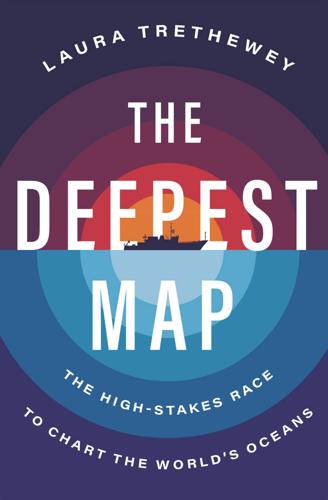
The Deepest Map
by
Laura Trethewey
Published 15 May 2023
Chinese coast guard and naval ships have harassed and obstructed oil-survey vessels working within the offshore Exclusive Economic Zone (EEZ) of sovereign nations. Chinese coast guard ships have rammed and sunk Vietnamese fishing vessels found within China’s so-called nine-dash line,9 which is at the heart of the dispute. China’s nine-dash line swoops south from the coast of mainland China along the coasts of Vietnam, Malaysia, Brunei, the Philippines, and Taiwan, enclosing 80 to 90 percent of the sea within a U-shaped area10 larger than the size of Mexico. In 2016, a tribunal at The Hague found that the line had no legal standing in the United Nations Convention on the Law of the Sea (UNCLOS), the first all-encompassing international treaty for the global ocean11 and one that China has signed.12 It also found that China had destroyed the marine environment by dumping sand on reefs and building islands.
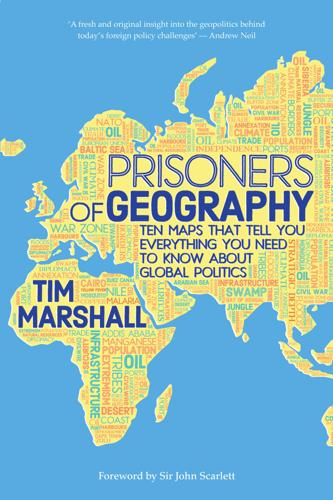
Prisoners of Geography: Ten Maps That Explain Everything About the World (Politics of Place)
by
Tim Marshall
Published 10 Oct 2016
It may be able to surface a sub next to a US carrier group, but its underwater fleet is too noisy to hunt enemy submarines. While it works on this problem it is deploying anti-submarine ships and is busy installing a network of underwater sensors in the East and South China Seas. Between China and the Pacific is the archipelago that Beijing calls the “first island chain.” There is also the “nine-dash line,” more recently turned into ten dashes in 2013 to include Taiwan, which China says marks its territory. This dispute over ownership of more than two hundred tiny islands and reefs is poisoning China’s relations with its neighbors. National pride means China wants to control the passageways through the chain; geopolitics dictates it has to.

The Age of Stagnation: Why Perpetual Growth Is Unattainable and the Global Economy Is in Peril
by
Satyajit Das
Published 9 Feb 2016
Wary of North Atlantic Treaty Organization expansion to its borders, and facing Muslim insurgencies in the Caucasus, Russia is actively defending its areas of historical influence. The change in policy has altered its relationship with the West, and is seen by some as the start of a new cold war. Feted as an economic superpower, China increasingly seeks commensurate political influence. Relying on the nine-dash line, a U-shaped series of markings on a map published in the then Republic of China on December 1, 1947, it is in dispute with the Philippines, Brunei, Malaysia, Taiwan, and Vietnam over claims to large parts of the South China Sea and its mineral resources, including oil. There are also territorial disputes between China, South Korea, and Japan over parts of the Yellow Sea and the Sea of Japan.
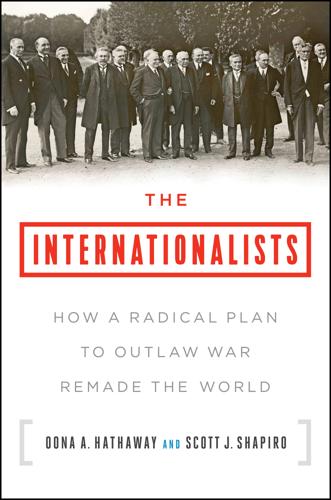
The Internationalists: How a Radical Plan to Outlaw War Remade the World
by
Oona A. Hathaway
and
Scott J. Shapiro
Published 11 Sep 2017
For most of these “reclamations” are taking place on contested territory. No shot has yet been fired, but China has been seeking to establish its claims by gradual occupation. China’s claim in the South China Sea is the most audacious by far—including a vast area within what it has dubbed the “Nine-Dash Line” and others have called the “Cow’s Tongue Line”—an accurate description of its shape but also of the appetite it represents. Though China claims it has exercised sovereignty over the area within the Cow’s Tongue Line for centuries, its neighbors vehemently disagree. Coastal states such as Brunei, Malaysia, the Philippines, Taiwan, and Vietnam point to their own spotty and incomplete historical records to establish their claims to the Paracel Islands, the Pratas Islands, Scarborough Shoal, and the Spratly Islands, among many others.
…
., 210, 254–56 Morrison, Charles Clayton, 123–24 Moscow Declarations (1943), 250 Moses, 74 Mossadegh, Mohammad, 329 “most favored nation” principle, 378–79, 481n–82n Moynihan, Daniel Patrick, 28 Muhammad, 411–12 Mukden, 164 Munich Agreement (1938), xiii Murad I, Caliph, 398 murder, xi, 48, 58–62, 63, 72, 74–77, 250, 256, 274, 280, 288–89, 352, 365, 454n Muslim Brotherhood, 403–4, 405, 407 Mussolini, Benito, xii–xiii, 249, 258–59, 263–64 Myth of the Twentieth Century, The (Rosenberg), 279 Nagasaki, 134–35, 213 Nagasaki, bombing of (1945), 213 Nagato, Prince of, 481n Nakamura Shintarō, 154 Nanking, 175 Napoleon I, Emperor of France, 45, 64–69, 251, 262, 410 Napoleon III, Emperor of France, 69 Napoleonic Wars, 64–69, 76 Nasser, Gamal Abdel, 404–5, 407–8, 410 National Defense Strategy (2005), 372–73 nationalism, xiv, 9, 19, 22, 26, 31, 53, 68, 148, 171, 184, 214, 223, 244, 316, 345–48, 365, 372, 407, 410–11, 412 Native Americans, 17, 49–51, 56–63, 76, 136, 456n natural rights, 11, 18, 22, 28, 29–30, 97, 143, 146–47, 409–10, 435n, 462n Nazism, 162, 176, 184, 185, 191, 204, 218, 224–36, 254, 278–80, 286, 318–19, 403, 508n–9n, 526n Nelson, Horatio, Lord, 210 nemo dat quod non habet (“one cannot give that which one does not have”), 16 Nepal, 312 Netherlands, 3–23, 19, 26–27, 51, 76, 78, 142–43, 252, 328, 329, 346, 349, 379, 381, 436n–37n, 439n see also Dutch Republic Neumann, Franz, 229, 295 Neurath, Konstantin von, 238, 290 neutrality, 21, 23, 41, 54, 81, 85–92, 96, 97, 102–4, 109, 119, 125, 136, 165, 167, 168–82, 190, 191, 194, 238, 239, 246–48, 263, 267, 273, 287–89, 304, 332, 377, 415, 421, 459n, 460n, 463n Neutrality Acts, 171, 174, 176, 177, 179, 190 New Deal, 189 New England, 49–50 Newfoundland conference (1941), 189–91 New Republic, 108, 109–10 New World Order, xvii–xix, xx, xxi, 172–75, 192, 213, 247, 258, 272, 287, 303–4, 309–415, 415–16, 418, 419, 421–22 New Yorker, 277 New York Herald Tribune, 128–29 New York Stock Exchange, 107 New York Times, xiii, 107, 121, 185, 230, 242, 250, 265, 386 New York World, 59 New Zealand, 212 Nietzsche, Friedrich, 223, 256 Nigeria, xiii, 318, 328, 368 Night of the Long Knives, The, 236, 293 Nijhoff, Martin, 95 “Nine-Dash Line,” 359–63, 360 Nine Years’ War, 32, 447n Nishi Amane, xx, 141–50, 159, 417, 483n-84n Nobel Prize for Peace, x, 120, 125, 129, 130, 211, 471n, 476n nonrecognition policy, 166–69, 172, 173, 287, 330, 341, 492n, 493n Nootka Crisis (1790), 40–41 Norris, Ernest E., 197 North Atlantic Treaty Organization (NATO), 43, 313, 343, 344, 392, 419 North Korea, 381, 387, 418 Northumberland, HMS, 67 Norway, 185, 188, 541n Notter, Harley, 194 “No-War Pact,” 158 see also Kellogg-Briand Pact No Water, 58–59, 61 nuclear weapons, 205, 394–95, 532n nullum crimen sine lege (no crime without law), 252 nullum crimen sine poena (no crime without punishment), 252, 516n-17n Numbers, Book of, 74 “Nuremberg Defense,” 248 Nuremberg Laws (1935), 277 Nuremberg Trial (International Military Tribunal), 215–17, 247, 248–99, 300, 523n Obama, Barack, 389, 391, 392 Office of Foreign Assets Control (OFAC), U.S., 388–90 Office of Military Government of the United States (OMGUS), 275 oil reserves, 179–82, 361–62, 365, 366, 393, 419 Okinawa Island, 532n Oldenbarnevelt, Johan van, 19–20 Old World Order, xv–xvii, xviii, xix, xx, xxii, 3–97, 103, 105, 106, 108, 114, 126, 133–34, 136, 138, 143, 146, 151–52, 158–59, 160, 163, 165, 169–70, 180–82, 192, 213, 253, 266, 294, 300, 303–4, 314, 316, 322, 328–29, 330, 335, 338, 341, 344–45, 353, 354, 369, 370, 382, 415, 420, 421, 423 Oliver Wendell Holmes Lectureship, 245 On the Law of War (Vitoria), 64 On War (Clausewitz), xv Open Door Policy, 151–53, 166 Operation Argonaut, 202–9 Opium War (First), 133–34 Opium War (Second), 140 Oppenheim, Lassa, 79, 239, 246–47, 248, 260, 377, 465n–66n Oriente, 323 Origins of Totalitarianism, The (Arendt), 236 Ottoman Empire, 65, 102, 204, 313, 317, 323–24, 349, 356, 382–83, 398–99, 410, 411, 492n Ouidah, 324–28 “outcasting,” 370, 371–95, 418–19, 420, 422 Outlawry of War: A Constructive Policy for World Peace, The (Morrison), 123–24 “outlawry of war” movement, 109, 110, 111, 112–27, 130, 161, 167, 169, 170, 192, 195, 199, 217, 218, 219, 222–24, 238, 239, 247, 248, 250, 253, 272, 273, 294, 303, 311, 313, 315, 316, 331, 333, 334, 338, 341–46, 350–54, 368, 370, 395, 408, 415, 420, 469n see also Levinson, Salmon O.

MegaThreats: Ten Dangerous Trends That Imperil Our Future, and How to Survive Them
by
Nouriel Roubini
Published 17 Oct 2022
Rudd and others remind readers that an event of minor global significance, the assassination of Archduke Ferdinand, ignited World War I. The status of the waters around China invites a catastrophic miscalculation. Besides China, six countries stake overlapping claims to parts of those waters: Brunei, Indonesia, Malaysia, the Philippines, Taiwan, and Vietnam. Beijing asserts “historical maritime rights” within a “nine-dash line” that encroaches on its neighbors. China did not like a 2016 decision by the Permanent Court of Arbitration that ruled against its claims. A “gray zone” strategy deploys fishing and coast guard vessels to establish de facto claims that spite the court. If a navigational confrontation ends with one of those ships sinking, it could lead to catastrophe.
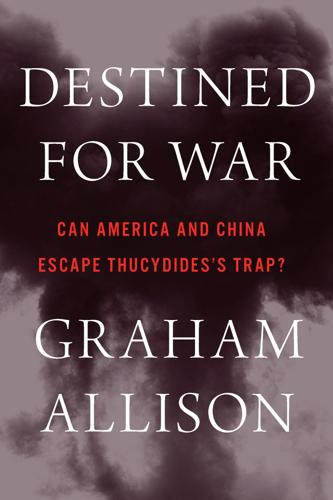
Destined for War: America, China, and Thucydides's Trap
by
Graham Allison
Published 29 May 2017
In 1956, for example, Taiwan occupied Itu Aba, the largest feature in the Spratly Islands, and garrisoned hundreds of troops there.62 In September 1973, South Vietnam formally annexed ten of the Spratly Islands and deployed hundreds of troops to them to defend its claim.63 Fearful that its interests were being trampled by its neighbors, in 1974 China seized control of the islands closest to its border—the Paracels—from Vietnam.64 In 2012, China took control of Scarborough Shoal from the Philippines. Since then, it has enlarged its claims, asserting exclusive ownership of the entire South China Sea and redefining the area by redrawing the map with a “nine-dash line” that encompasses 90 percent of the territory. If accepted by others, its neighboring countries have observed that this would create a “South China Lake.” China has also undertaken major construction projects on features throughout the sea, building outposts on seven different features in the Spratly Islands.

Connectography: Mapping the Future of Global Civilization
by
Parag Khanna
Published 18 Apr 2016
China is building far more HYSY-like platforms than it is aircraft carriers. China, Vietnam, and the Philippines are all signatories to the UN Convention on the Law of the Sea, widely considered the “constitution for the seas,” yet historical claims stemming from previous wars and bilateral agreements have trumped respect for its provisions. China’s now infamous “9-dash line” map—most recently issued with ten dashed lines—depicts sovereign claims hanging downward like a tongue along the Vietnamese coast, along Borneo island, and past the Philippines to Taiwan. It would be like America claiming the entire Caribbean to Venezuela’s coast as its own—which was indeed the gist of the early twentieth-century Roosevelt corollary to the Monroe Doctrine.
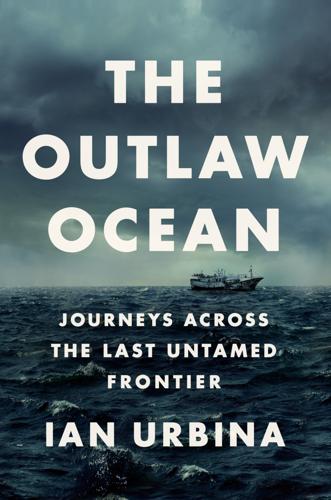
The Outlaw Ocean: Journeys Across the Last Untamed Frontier
by
Ian Urbina
Published 19 Aug 2019
Congress, Senate Committee on Commerce, Science, and Transportation, 2013) found that in 2012 a third of the assaults reported on these ships were against minors. CHAPTER 12 FLUID BORDERS And while it’s easy to portray: China also claimed the sea’s gas-rich Natuna Islands, and most of the offshore scuffles involving Chinese fishing boats occurred in an area that security analysts call the nine-dash line, which covers more than 80 percent of the South China Sea. Though the designation is not recognized under international law, China declared this region in the 1940s part of its “traditional fishing grounds.” “If the boy is there”: I later also visited another detention center or “shelter” in Batam, and conditions were similar.